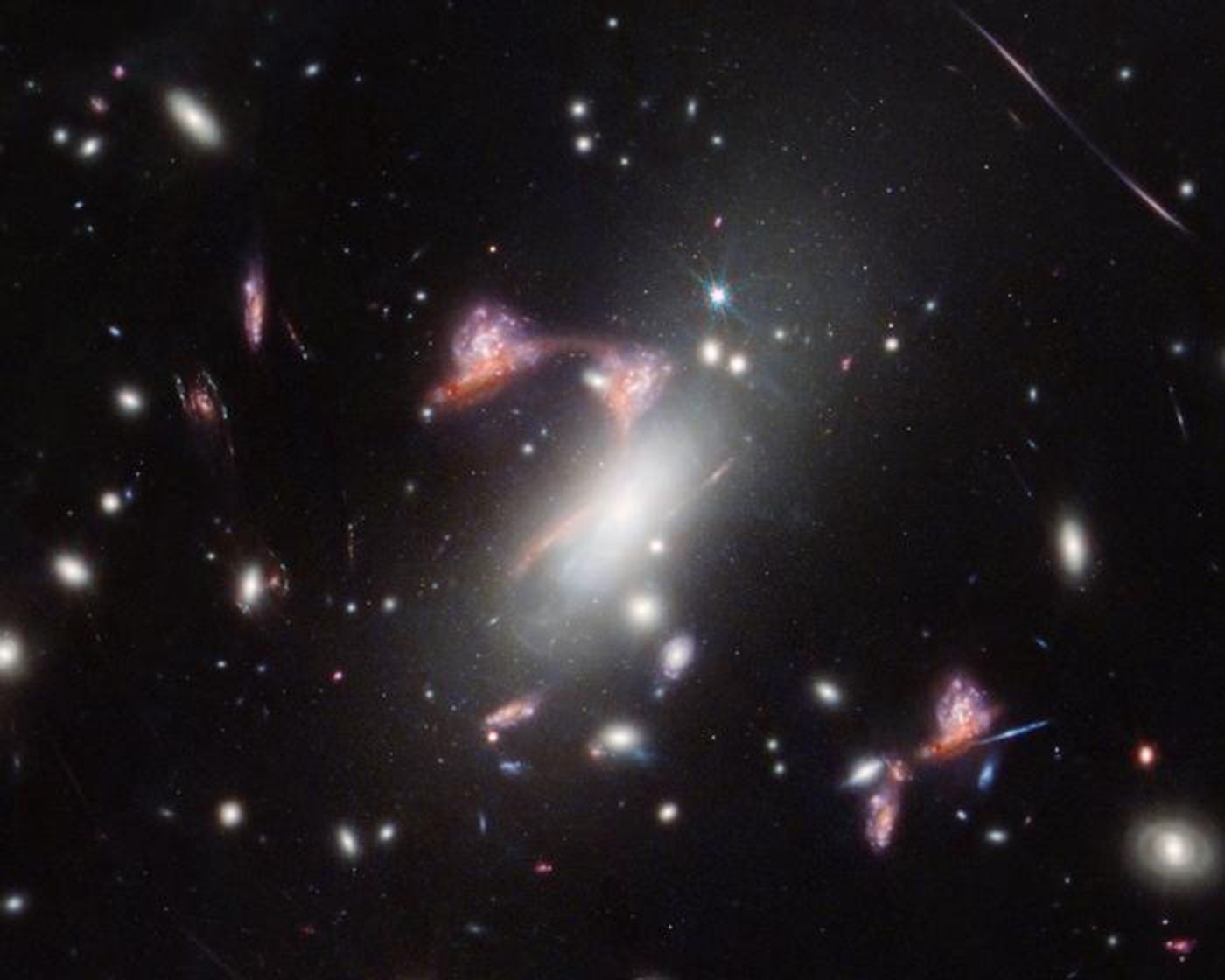Galaxy Interactions and Cosmic Illusions: Webb's Stunning New Images
How did stars form 7 billion years ago, or approximately halfway between the Big Bang and now? This is what a recent study published in the Monthly Notices of the Royal Astronomical Society hopes to address as an international team of researchers used NASA’s James Webb Space Telescope (JWST) to observe two distant galaxies using the gravitational lensing method, which is a “magnifying glass” that forms around large celestial objects that warp the fabric of space-time. This study holds the potential to help astronomers better understand the conditions in the early universe and the techniques used to study those conditions.
While the gravitational lensing method enables observations of distant objects, those objects also tend to appear distorted due to the space-time warping. In this case, the distant galaxies being observed appear together as a question mark in the JWST images, though astronomers were still able to learn quite a bit about this galaxy. These findings included new insights into star formation, with several stars in the red galaxy exhibiting various stages of formation, including bursty stars, quenching stars, and stars in equilibrium.
Distant galaxies seen forming a question mark from the gravitational lensing due to a closer galaxy cluster. (Credit: NASA, ESA, CSA, STScI, V. Estrada-Carpenter (Saint Mary's University))
“Both galaxies in the Question Mark Pair show active star formation in several compact regions, likely a result of gas from the two galaxies colliding,” said Dr. Vicente Estrada-Carpenter, who is a postdoctoral fellow at Saint Mary’s University and lead author of the study. “However, neither galaxy’s shape appears too disrupted, so we are probably seeing the beginning of their interaction with each other.”
Gravitational lensing is excellent technique to observe distant galaxies despite the warping and distortion caused by their effect, and observing distant galaxies using this method could continue to prove valuable for helping astronomers better understand the early universe.
What new discoveries will JWST make about the early universe in the coming years and decades? Only time will tell, and this is why we science!
As always, keep doing science & keep looking up!
Sources: Monthly Notices of the Royal Astronomical Society, EurekAlert!, NASA









